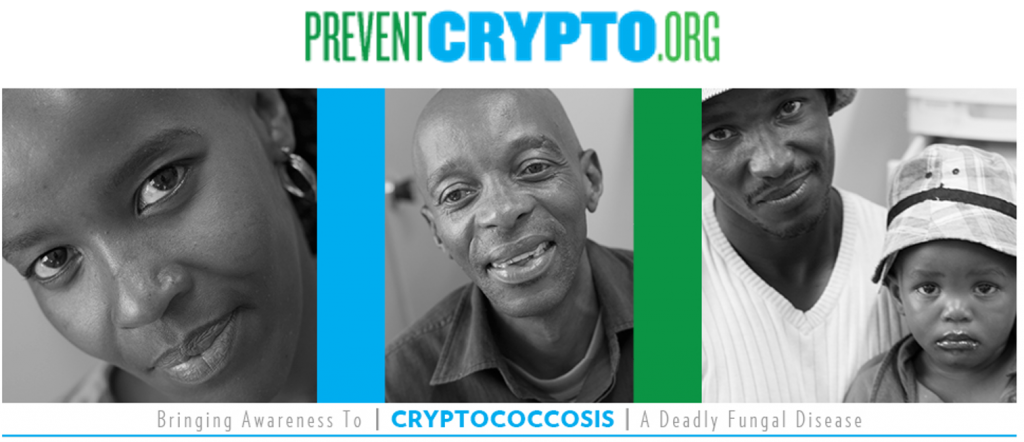Immunocompromised patients are at risk of life-threatening fungal meningitis caused by the yeast Cryptococcus.
Patients with advanced HIV and a CD4+ count below 100 cells/mm3 are at particular risk when antiretroviral therapy begins, when they can suffer an immune reconstitution inflammatory syndrome (IRIS) as their immune system reacts against cryptococcal antigen.
Point-of-care tests are now available for cryptococcal antigen, which can be stored at room temperature for extended periods and performed at the bedside by clinicians, giving an answer within 30 minutes.

Recent reviews
- Williams et al (2017) Cryptococcal meningitis: epidemiology, immunology, diagnosis and therapy
- Rajasingham et al (2019) Cryptococcal Meningitis Diagnostics and Screening in the Era of Point-of-Care Laboratory Testing
- WHO Guidelines (2018) for the diagnosis, prevention and management of cryptococcal disease in HIV-infected adults, adolescents and children
- WHO rapid advice booklet for diagnosis, prevention and management in HIV/AIDS patients.

Clinical lectures & diagnostics videos

Factsheet
| NAME Cryptococcal meningitis, fungal meningitis |
| DISEASE Subacute meningitis with increasing symptoms over one to four weeks. EARLY FEATURES: headache, vomiting, intermittent fever and reduced mental acuity. LATER FEATURES: progressive decrease in consciousness, double vision then blindness, and stroke-like features, with raised intracranial pressure. Occasionally focal neurological features. Focal central nervous system (CNS) lesions are more common in non-immunocompromised people, who may also develop communicating hydrocephalus and frequently also have focal lung lesions. |
| FUNGI Usually Cryptococcus grubii (previously Cryptococcus neoformans var grubii). In non-immunocompromised people C. gattii complex are proportionally more common. Very rarely other species of Cryptococcus. |
| GLOBAL BURDEN More common in sub-Saharan Africa and tropical countries (Brazil, Thailand, Malaysia, Papua New Guinea). In the United States, active population-based surveillance (1992-1994) showed Cryptococcosis developed in 2-5% of HIV-infected persons annually. Previously estimated at 1 million, the incidence of AIDS-related cases is now falling due to more effective combination ART and widespread use of fluconazole; a recent estimate is 278,250 cases each year. Among HIV-negative persons in the US, average annual incidence has remained around 1/100,000 population. |
| RISK FACTORS AIDS, transplantation and other immunocompromised patients. No apparent underlying disease seen, especially in the tropics. |
| DIAGNOSIS Cryptococcal antigen (CrAg) testing and culture. Cryptococcal antigen is detectable in cerebral spinal fluid (CSF) of >98% of patients. Occasionally CrAg is positive and culture negative. Raised intracranial pressure is often found and requires additional treatment. This should be measured when CSF is taken. Blood cultures (and rarely urine cultures) are also positive for C. neoformans in most patients. Cryptococcal antigen is positive in blood in >90% all patients with cryptococcal meningitis in AIDS, but less often in non-AIDS patients. Cryptococcal antigen may be detectable in urine too. |
| TREATMENT Current guidelines Amphotericin B (>0.7 mg/kg/d) plus flucytosine (75-100 mg/kg/d in split doses if renal function normal) is the recommended treatment as induction therapy for at least two weeks followed by fluconazole (400 mg/d) as maintenance therapy for at least eight weeks. Lipid formulations of amphotericin B (3-6 mg/kg) can be used in place of conventional amphotericin B. Alternative all oral therapies include fluconazole (>800 mg/d) plus flucytosine 100 mg/kg/d in split doses). Some amphotericin B prior to an azole may significantly improve response rates. The use of flucytosine probably reduces relapse. Raised intracranial pressure requires careful mechanical drainage with repeated lumbar punctures, a lumbar drain or intraventricular drain. |
| OUTLOOK If diagnosed rapidly, treated with combined amphotericin B and flucytosine and raised intracranial pressure managed pro-actively, the 10-week mortality is probably under 20%. In patients treated late, and with only fluconazole therapy, the outcome is much poorer: >50% 10-week mortality in a series from Africa. C. gattii infections probably respond less well. In those with underlying disease that cannot be controlled (e.g. lymphoma, untreated HIV) the outcome is poor. |

Clinical trials
Please visit Clinicaltrials.gov for detailed information on clinical trials in progress.



